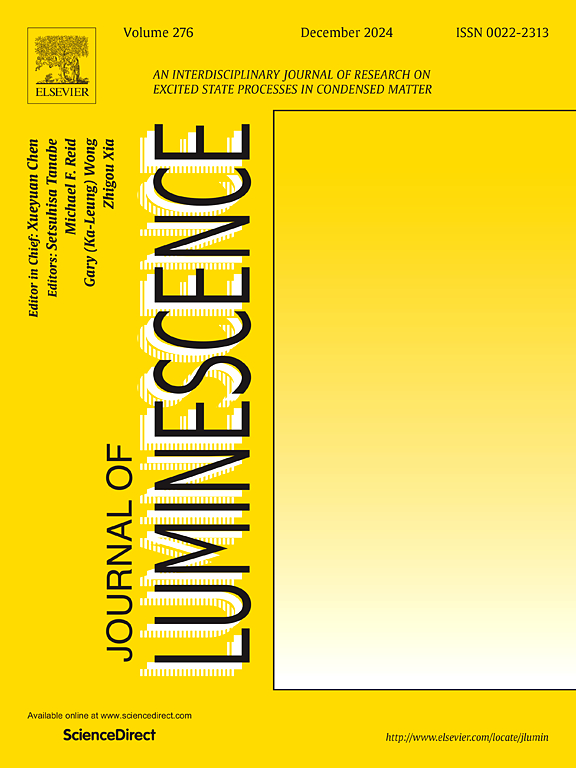Theoretical analysis of non-resonant structured laser beam effects on electronic properties of semiconductor quantum dot
IF 3.3
3区 物理与天体物理
Q2 OPTICS
引用次数: 0
Abstract
The theoretical study investigates and compares the impact of intense, non-diffractive, non-resonant structured laser beams with various intensity profiles on the electronic properties of cylindrical quantum dot. The comparative theoretical analysis demonstrates that the different structured beams, having unique symmetries and hence properties, have significant effects on the confinement potentials and electron probability densities of the quantum dot. The obtained results predict that the system is most sensitive to the intensity and peak position changes of the zeroth order Bessel beam. All calculations were carried out for a quantum dot composed of InAs embedded in a GaAs matrix, using material-specific parameters.
Drastic changes in the dressed confinement potentials and electron probability densities under the impact of the abovementioned beams are observed in our model, suggesting potential applications where precise manipulation of the charge carrier location is required. This study offers theoretical insight into the role of non-resonant structured laser fields in quantum dot systems, which could guide future experimental efforts in nanophotonics.
非共振结构激光束对半导体量子点电子特性影响的理论分析
理论研究比较了不同强度谱的强、无衍射、无谐振结构激光束对圆柱形量子点电子特性的影响。对比理论分析表明,不同结构的光束具有独特的对称性和特性,对量子点的约束势和电子概率密度有显著影响。结果表明,该系统对零阶贝塞尔光束的强度和峰值位置变化最为敏感。所有的计算都是对嵌入在砷化镓矩阵中的InAs组成的量子点进行的,使用特定材料的参数。在我们的模型中观察到,在上述光束的影响下,修饰约束势和电子概率密度发生了巨大变化,这表明需要精确控制载流子位置的潜在应用。该研究为非共振结构激光场在量子点系统中的作用提供了理论见解,可以指导未来纳米光子学的实验工作。
本文章由计算机程序翻译,如有差异,请以英文原文为准。
求助全文
约1分钟内获得全文
求助全文
来源期刊

Journal of Luminescence
物理-光学
CiteScore
6.70
自引率
13.90%
发文量
850
审稿时长
3.8 months
期刊介绍:
The purpose of the Journal of Luminescence is to provide a means of communication between scientists in different disciplines who share a common interest in the electronic excited states of molecular, ionic and covalent systems, whether crystalline, amorphous, or liquid.
We invite original papers and reviews on such subjects as: exciton and polariton dynamics, dynamics of localized excited states, energy and charge transport in ordered and disordered systems, radiative and non-radiative recombination, relaxation processes, vibronic interactions in electronic excited states, photochemistry in condensed systems, excited state resonance, double resonance, spin dynamics, selective excitation spectroscopy, hole burning, coherent processes in excited states, (e.g. coherent optical transients, photon echoes, transient gratings), multiphoton processes, optical bistability, photochromism, and new techniques for the study of excited states. This list is not intended to be exhaustive. Papers in the traditional areas of optical spectroscopy (absorption, MCD, luminescence, Raman scattering) are welcome. Papers on applications (phosphors, scintillators, electro- and cathodo-luminescence, radiography, bioimaging, solar energy, energy conversion, etc.) are also welcome if they present results of scientific, rather than only technological interest. However, papers containing purely theoretical results, not related to phenomena in the excited states, as well as papers using luminescence spectroscopy to perform routine analytical chemistry or biochemistry procedures, are outside the scope of the journal. Some exceptions will be possible at the discretion of the editors.
 求助内容:
求助内容: 应助结果提醒方式:
应助结果提醒方式:


